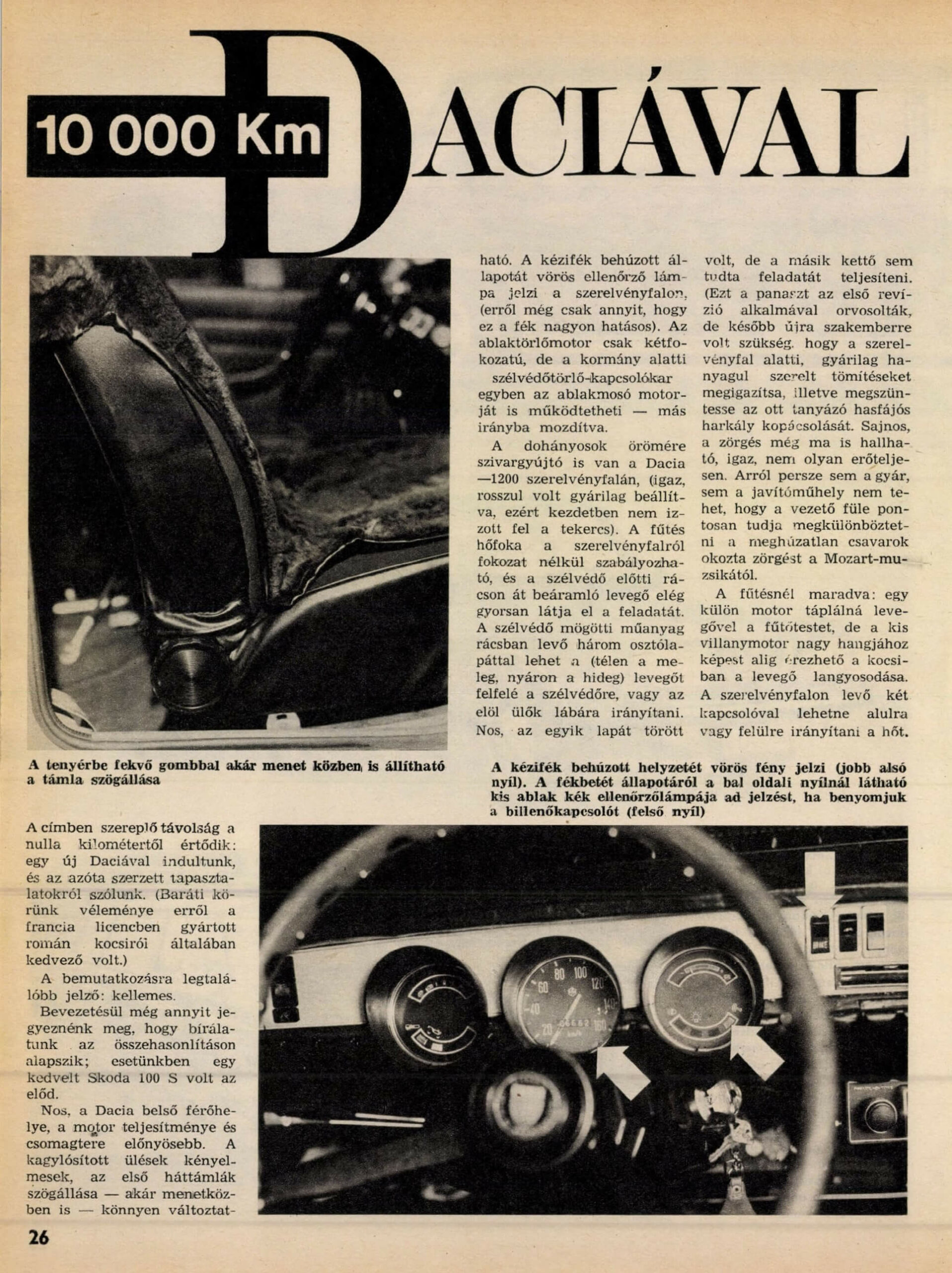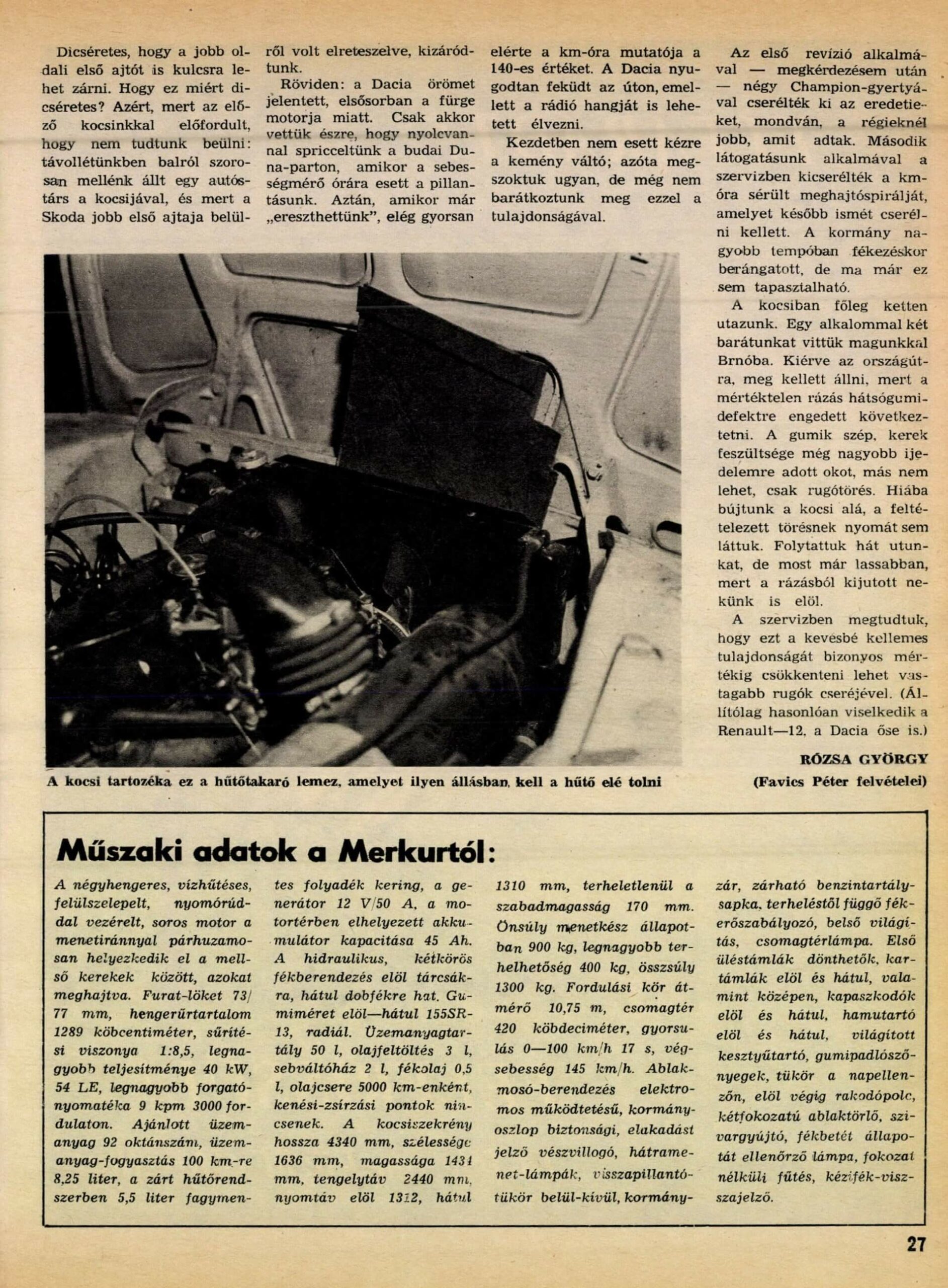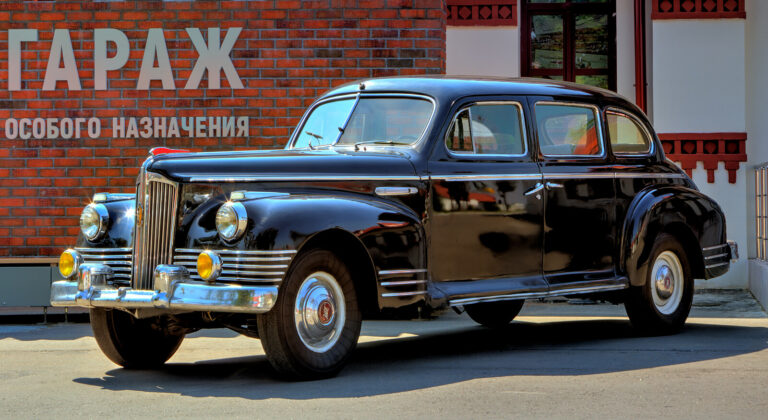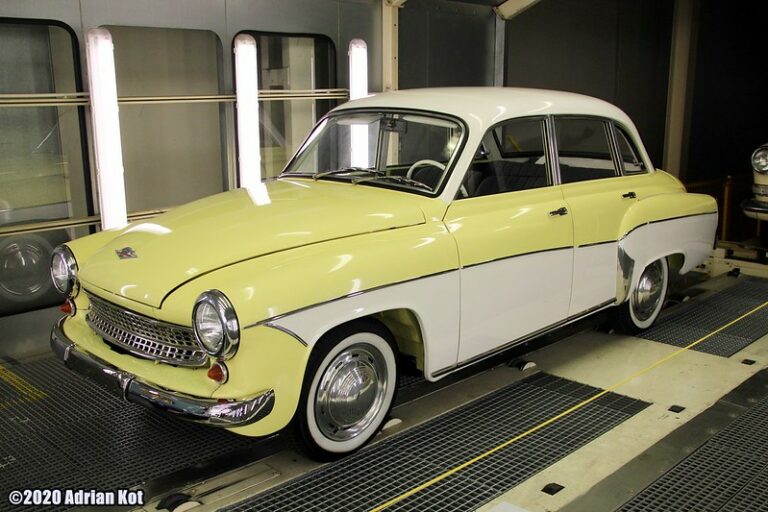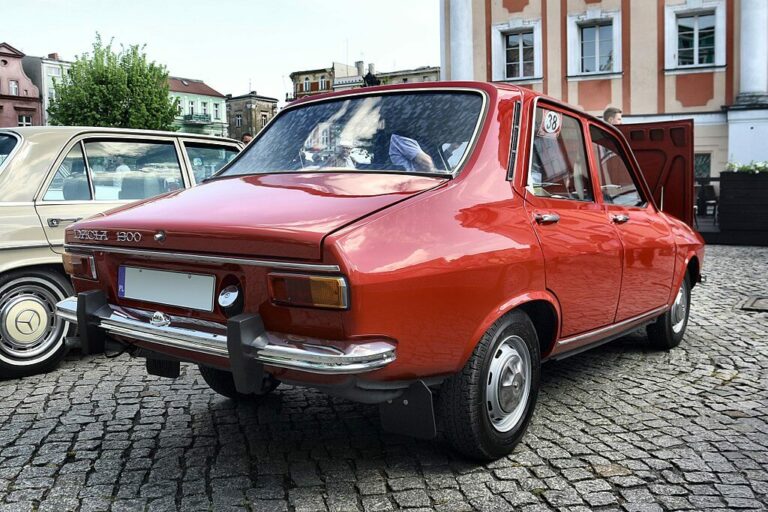1979 - 10 000 km in a Dacia 1.
January 1979and Februarywas published in the Car Enginechronicle of a ten thousand kilometre test drive György Rózsa from the pen. The test subject is a zero-kilometre Dacia 1300-which had been in production in our eastern neighbour for almost ten years. So the newspaper's staff - or its staff - were able to test-drive a car that was purely Romanian-made, as opposed to the early production cars that were still built predominantly with French components. They shared their experiences with the readers of the time in a two-part, in-depth article, which is now being republished - also in two parts - after a short introduction, without any changes. Unless otherwise indicated pictures Favics Péter his works.
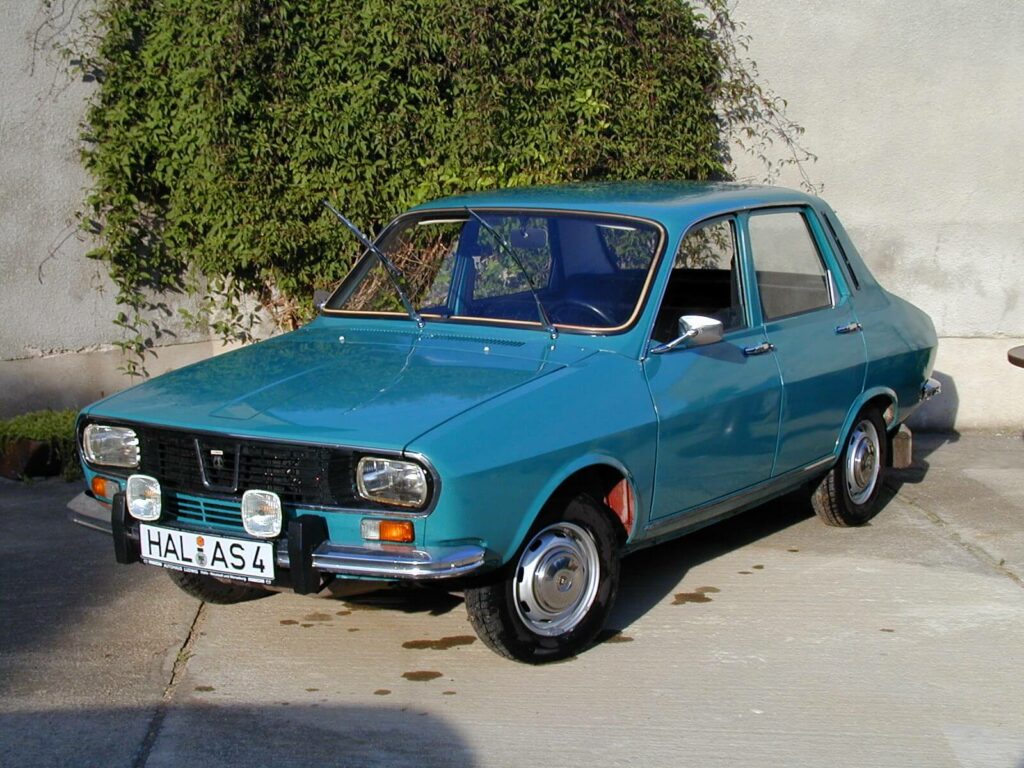
Dacia 1300 "Berlina" 1973 - Image source: wiki / dacia24.de
The first Dacia 1300 left the assembly line at the Mioveni plant on 23 August 1969 and the last Dacia 1310 rolled off the production line on 21 July 2004, just one month before the 35th anniversary of the production.
Romania decided to buy a Western car licence in the mid-1960s to reduce the country's dependence on imported consumer goods. The conditions stipulated that the vehicle had to be cheap and large enough for a family, but could be powered by a 1.3-litre engine at most. Alfa Romeo, Fiat, Austin, DKW and Peugeot were among the bidders, but Renault won the deal with the R-12. The choice was both a political and an economic one: it was in Romania's vital interest to seek economic cooperation with Western Europe, and within that, it was obvious that the balance would tip towards France.
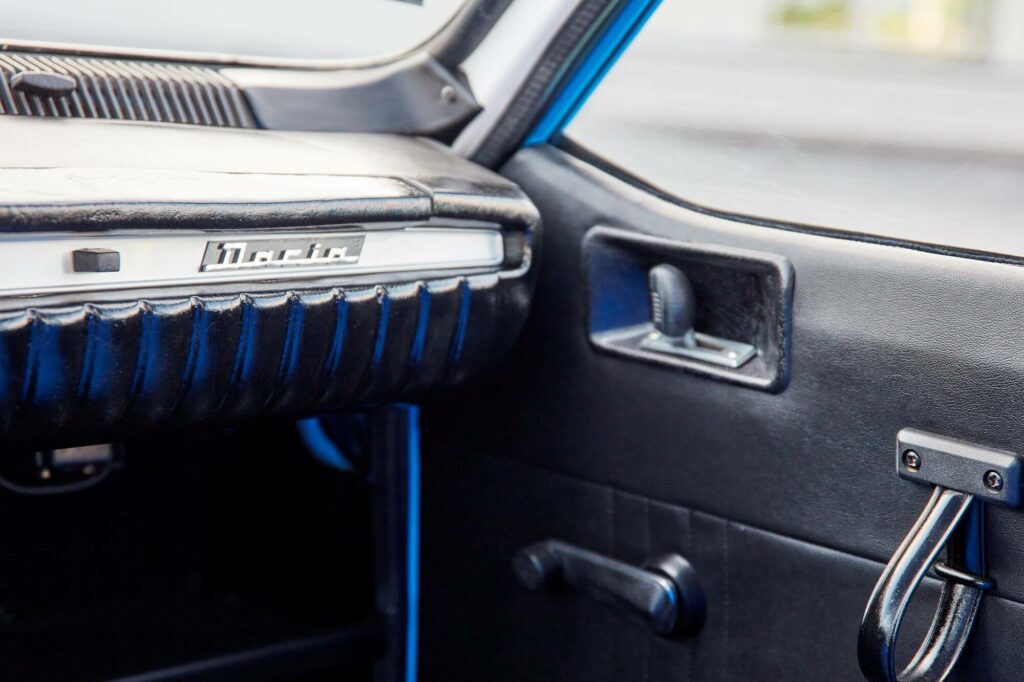
Image source: renaultgroup.com
When car production at the Mioveni factory started, the Renault 12 was still a prototype. Both versions made their debut in 1969, but if only by a few days, the Dacia was on the market before the licensed R-12 itself. For the first few years of production, the plant assembled kits imported from France. At the time of its release, the 1300 was a modern car offering comfort, safety, good performance and reliability, especially compared to the offerings available in the Eastern bloc in the 1960s and 1970s.
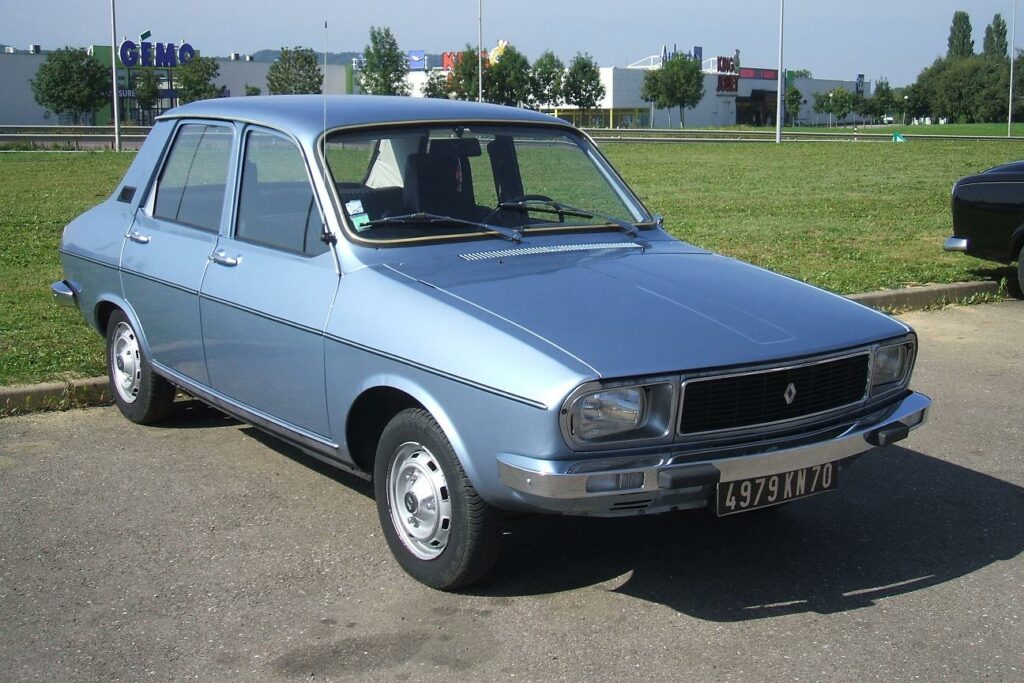
The original Renault 12 (TL) - Image source: wiki / Snoopy1974
The 1300 has undergone several minor facelifts, but the basic design has been retained throughout its 35-year production cycle. Although performance and fuel consumption have gradually improved, quality has not always been up to expectations. Corrosion of body panels, for example, has always been a major problem. Air conditioning, airbags or anti-lock brakes were never offered. A station wagon version, the Dacia 1300 Break, went into production in 1973, and in 1975 the Dacia 1302, a van based on the 1300 platform, was introduced.
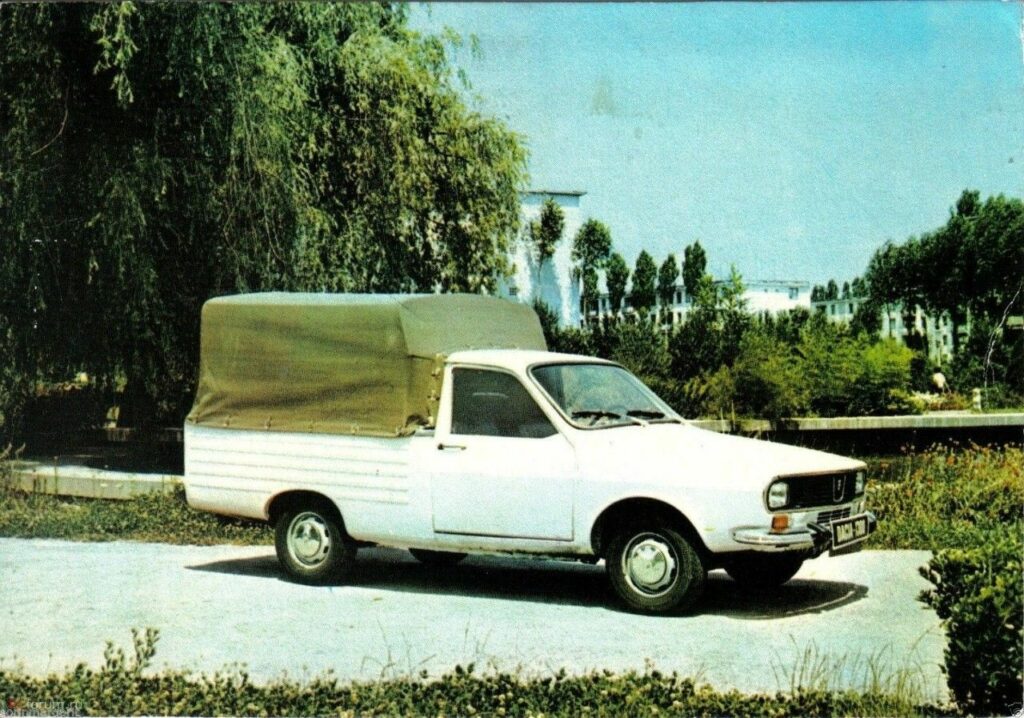
Dacia 1302 Pick-up - Image source: pinterest / Max Ingvarsson
Most of the cars were sold to consumers in the Eastern Bloc, but Dacia was also sold in export markets such as South America , Canada , China and North Korea, as well as the UK, Denmark and the Netherlands.
♠

The distance in the title is from zero kilometres: we started with a new Dacca, and we're reporting on our experiences since then. (Our circle of friends' opinions of this French-licensed Romanian car were generally favourable.)
The best adjective for the introduction is pleasant.
By way of introduction, we'd like to point out that our review is based on comparison; in our case, the predecessor was a popular Skoda 100 S.
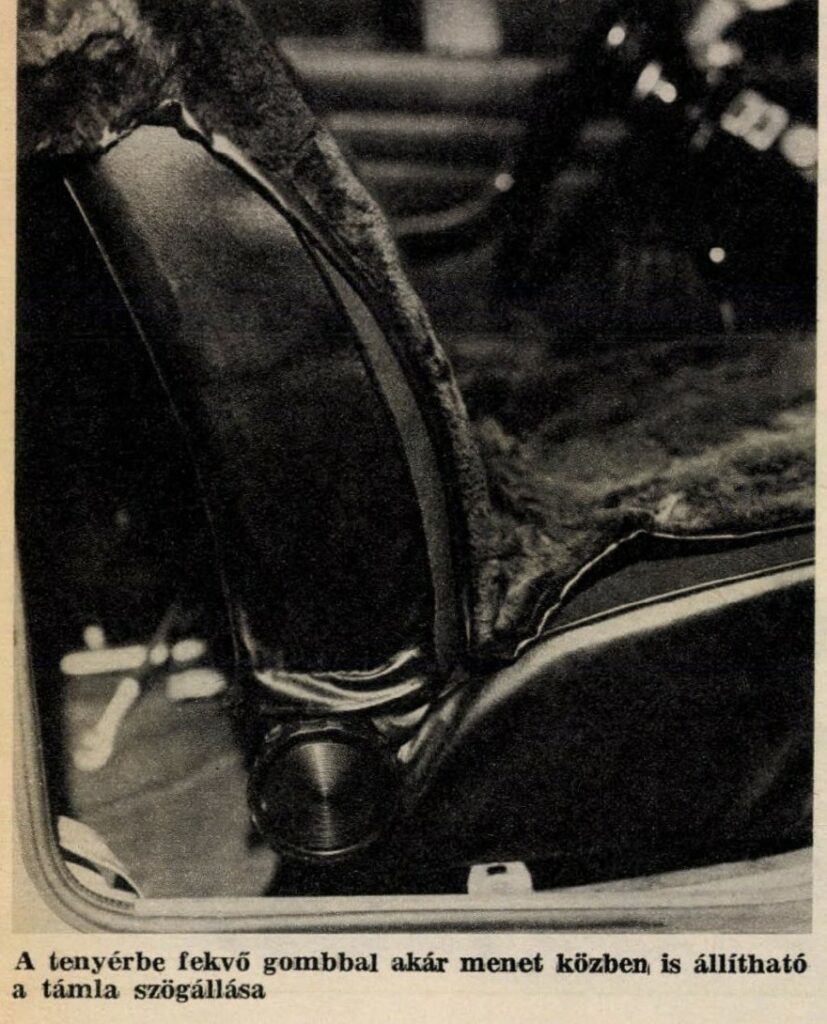
Well, the Dacia's interior space, engine power and luggage space are better. The bucket seats are comfortable and the front seat backrests are easily adjustable, even on the move. A red indicator light on the dashboard shows when the parking brake is engaged (and it's a very effective brake, I'll just say). The wiper motor is only two-speed, but the windscreen wiper switch lever under the steering wheel can also operate the window washer motor - moved in a different direction.
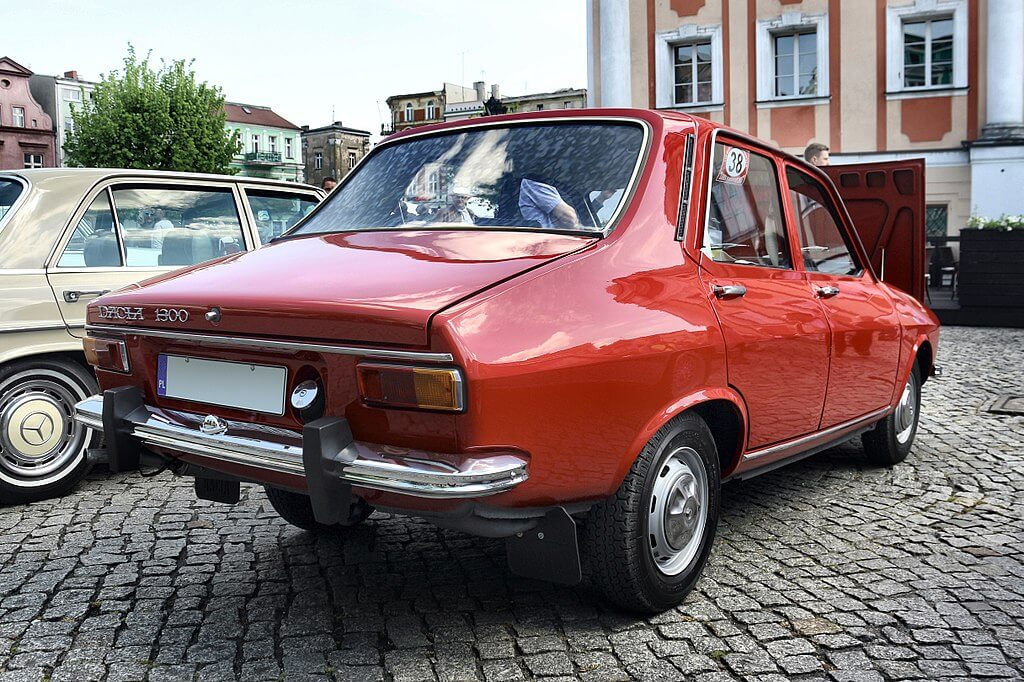
Image source: wiki / Abrimaal
For the smokers' pleasure, there's a cigar lighter on the dashboard of the Dacia 1200 (sic!) (although it was wrongly set at the factory, so the coil didn't glow initially). The heating temperature can be adjusted from the dashboard without any gears, and the air intake through the grille in front of the windscreen does the job quite quickly. The three splitters in the plastic grille behind the windscreen are used to direct the air (hot in winter, cold in summer) upwards onto the windscreen or onto the front seats' legs. Well, one of the blades was broken, but the other two couldn't do the job either. (This complaint was rectified at the first overhaul, but later again a specialist was needed to adjust the sloppily fitted factory seals under the fitting wall and to stop the belly-aching woodpecker that had been roosting there. Unfortunately, the rattle can still be heard today, although not as loudly. Of course, it is not the fault of either the factory or the repairer that the driver's ear can tell the difference between a rattle caused by loose bolts and Mozart music.
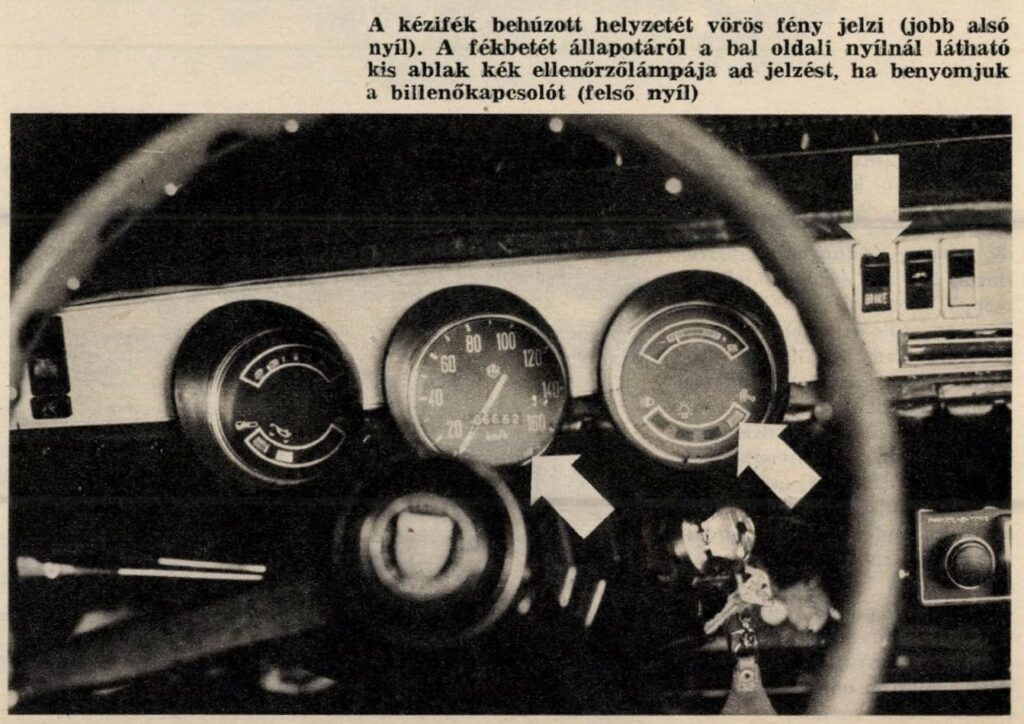
As for the heater, a separate motor would feed air to the radiator, but compared to the loud sound of the small electric motor, the air in the car hardly feels cooler. Two switches on the dashboard could be used to control the heat up or down.
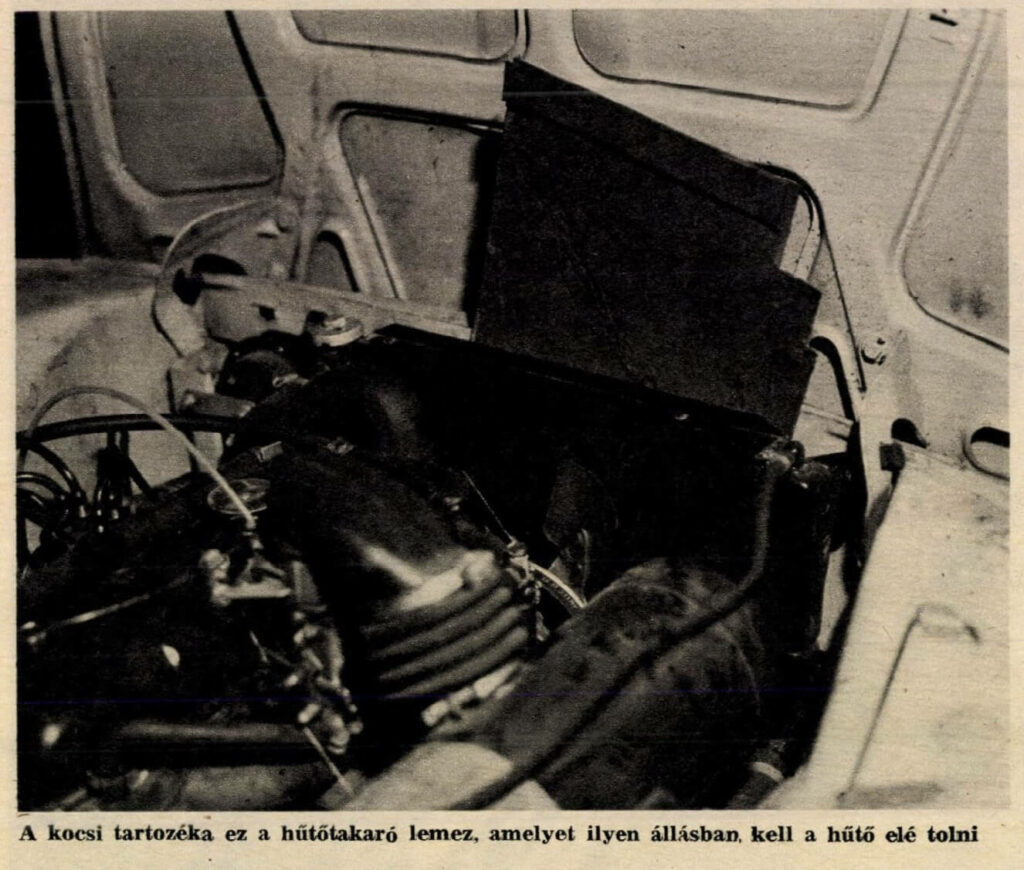
It's also commendable that the right-hand front door can be locked with a key. Why is that commendable? Because with our previous car we were unable to get in: a car-mate was standing close to us from the left in our absence, and because the Skoda's right front door was locked from the inside, we were locked out.
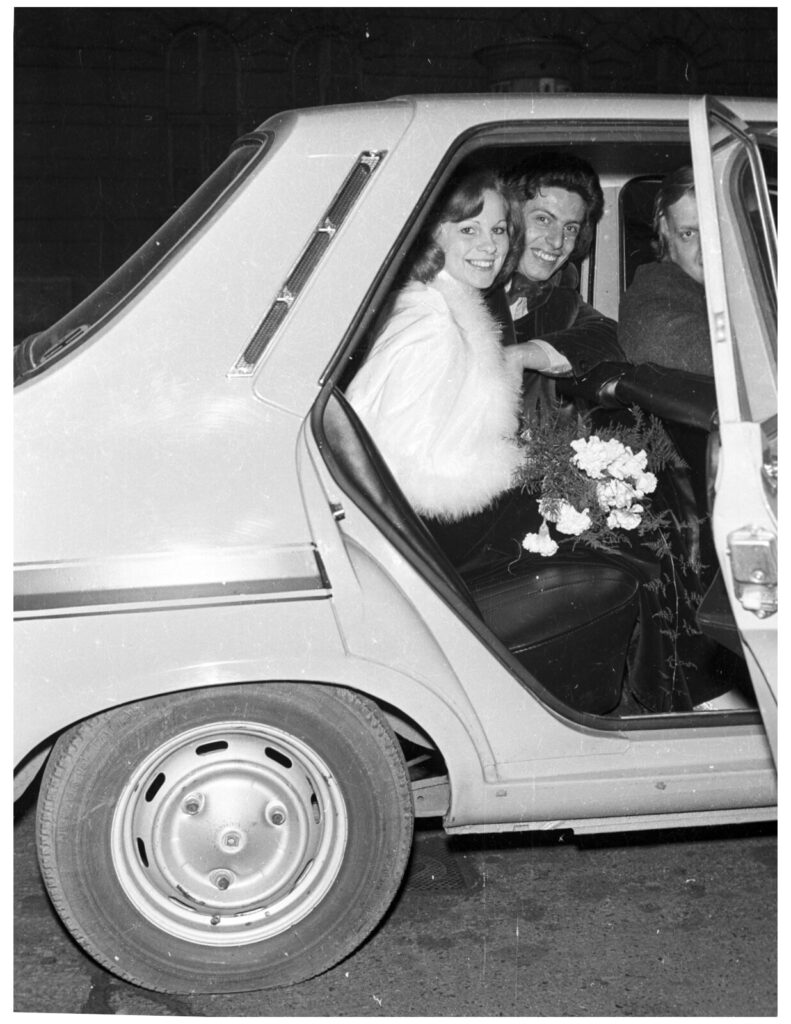
Hungary, 1979 Budapest VIII Baross utca in front of the District Council building. - Image source: 33411 / Fortepan
In short, the Dacia was a pleasure to drive, mainly because of its nimble engine. We only noticed that we were doing 80 km/h on the banks of the Danube in Buda when we glanced at the speedometer. Then, when we could "let off steam", the odometer reached 140 km/h quite quickly. The Dacia was lying calmly on the road, and the sound of the radio was also enjoyable.
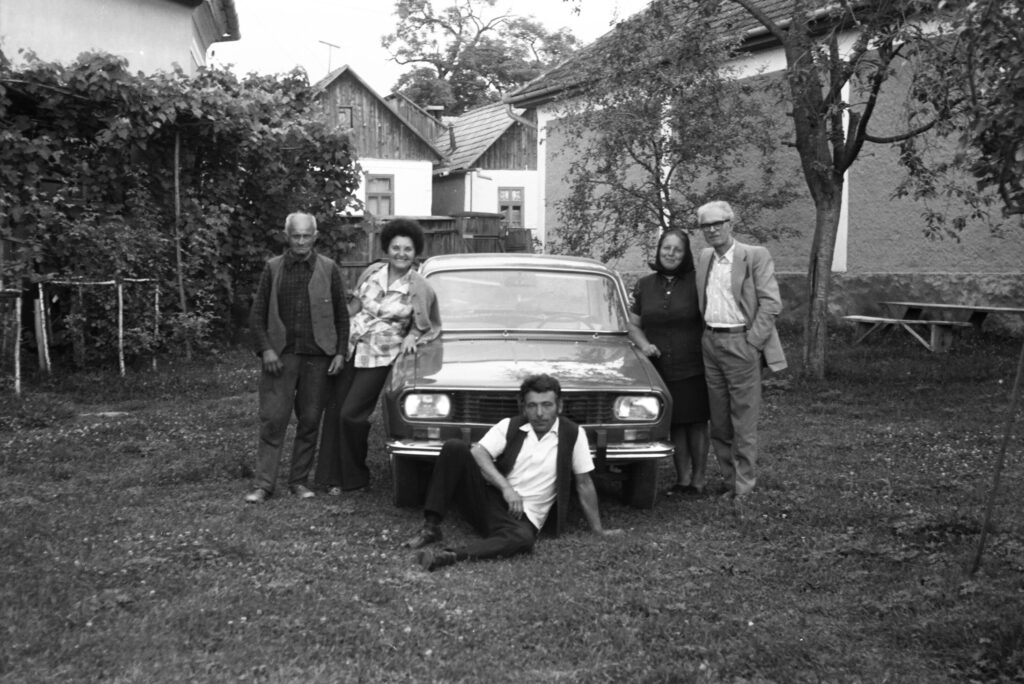
1980 - Image source: fortepan 133753 / Chuckyeager tumblr
Initially, we didn't like the hard gearshift; since then we've got used to it, but we're not yet used to it. At the first overhaul, after asking me, they replaced the originals with four Champion spark plugs, saying they were better than the old ones. On our second visit, the repair shop replaced the damaged drive coil on the km clock, which later had to be replaced again. The steering jerked when braking at higher speeds, but this is no longer an issue.
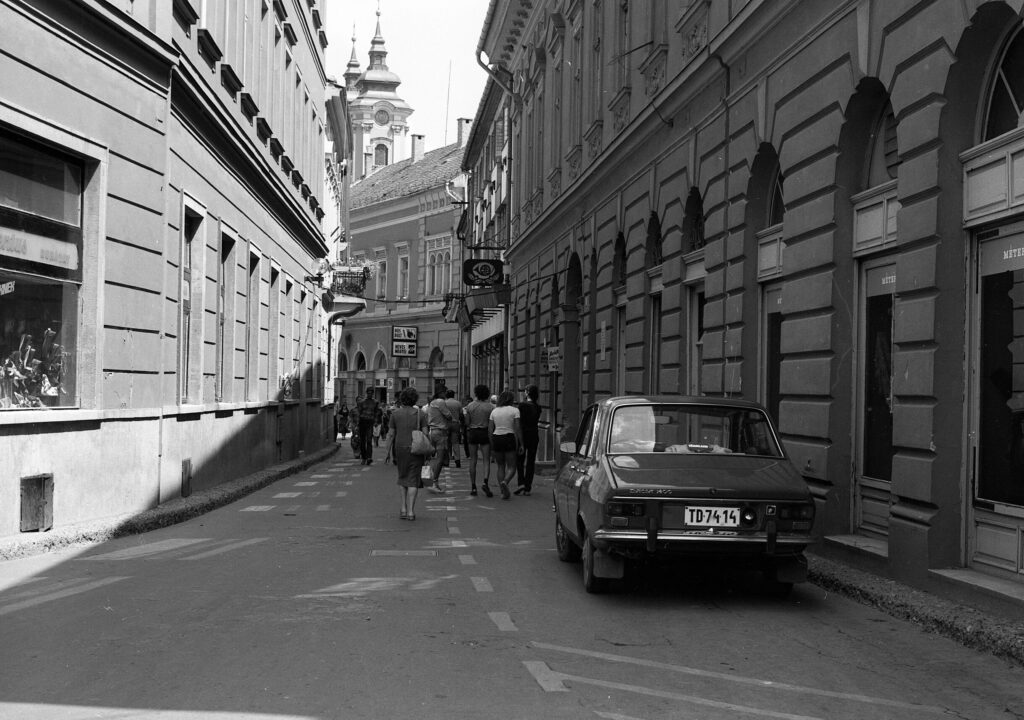
Hungary, 1982 Eger Érsek (Marx Károly) utca, in the background the Minorite church on Dobó square. Image source: 66957 / Hungarian Police
The car is mainly for two of us. On one occasion we took two friends with us to Brno. When we got on the highway, we had to stop because the excessive shaking suggested a back tire defect. The tyres were nice, the tire tension was even more alarming, nothing else but a spring break. We crawled under the car but there was no sign of the suspected fracture. So we continued our journey, but at a slower pace now, because the shaking had gotten us out of the front.
We learned in the workshop that this less pleasant characteristic can be reduced to a certain extent by replacing thicker springs. (The Renault-12, the ancestor of the Dacia, is said to behave in a similar way.)
György Rózsa
Technical data from Mercury
The in-line four-cylinder, water-cooled, overhead valve, pushrod-controlled engine is mounted parallel to the driving line between the front wheels, driving them. Stroke 73/77 mm, displacement 1289 cc, compression ratio -1:8.5, maximum power 40 kW, 54 hp, maximum torque 9 kpm at 3000 rpm. Recommended fuel 92 octane, fuel consumption per 100 km 8.25 litres, 5.5 litres of antifreeze circulating in the closed cooling system, alternator 12 V/50 A, battery capacity 45 Ah in the engine compartment. The hydraulic double circuit
the braking system acts on discs at the front and drum brakes at the rear. Front and rear tyre size 155SR-13, radial. Fuel tank 50 l, oil fill 3 l, gearbox 2 l, brake oil 0,5 l, oil change every 5000 km, no lubrication or grease points. Length of body 4340 mm, width 1636 mm, height 1431 mm, wheelbase 2440 mn, track gauge 1312 mm front, 1310 mm rear, unladen clearance 170 mm. Unladen weight 900 kg, maximum load 400 kg, total weight 1300 kg. Turning circle diameter 10.75 m, luggage space 420 cc, acceleration 0-100 km/h 17 s, top speed 145 km/h. Electrically operated window washers, steering column safety, hazard warning lights, reverse lights, interior and exterior rear-view mirrors, steering lock, lockable fuel tank cap, load-dependent brake force regulator, interior lighting, boot lamp. Tilting front seat backrests, armrests front and rear and centre, grab handles front and rear, ashtray front and rear, - illuminated glove box, rubber floor mats, mirror on sun visor, front end loading shelf, two-stage wiper, cigar lighter, brake pad status light, stepless heater, parking brake indicator.
The next continuation of this article, published in February 1979, can be found here.
